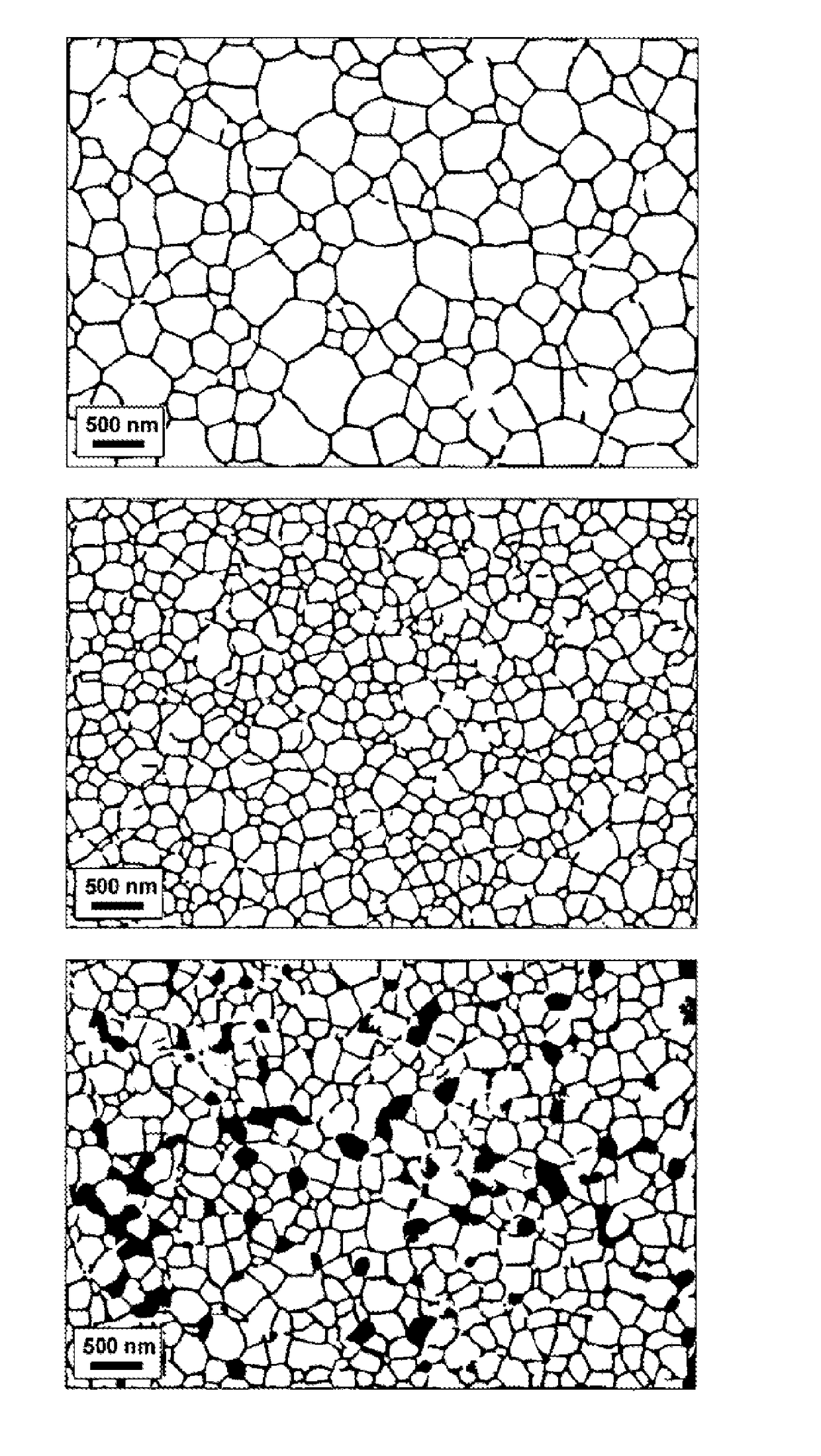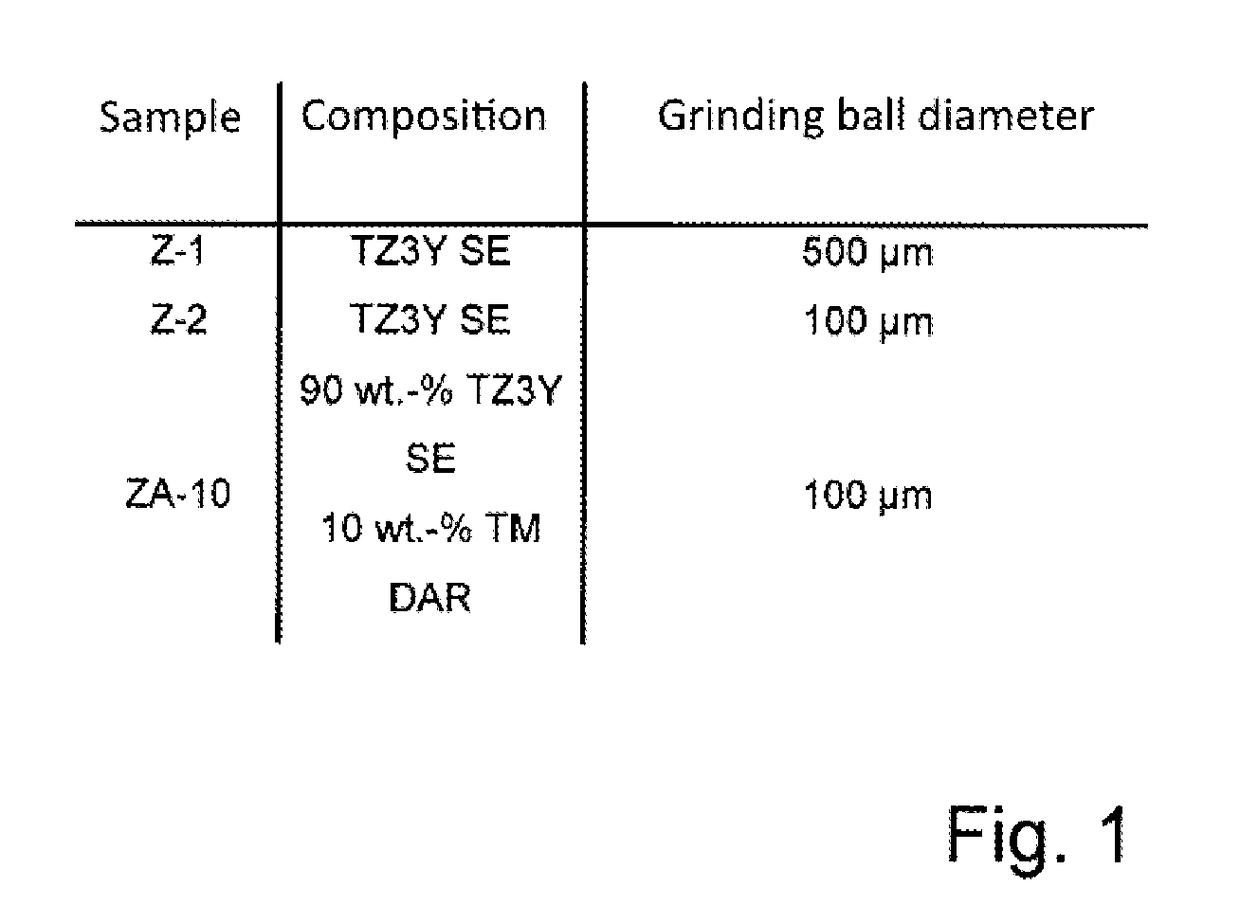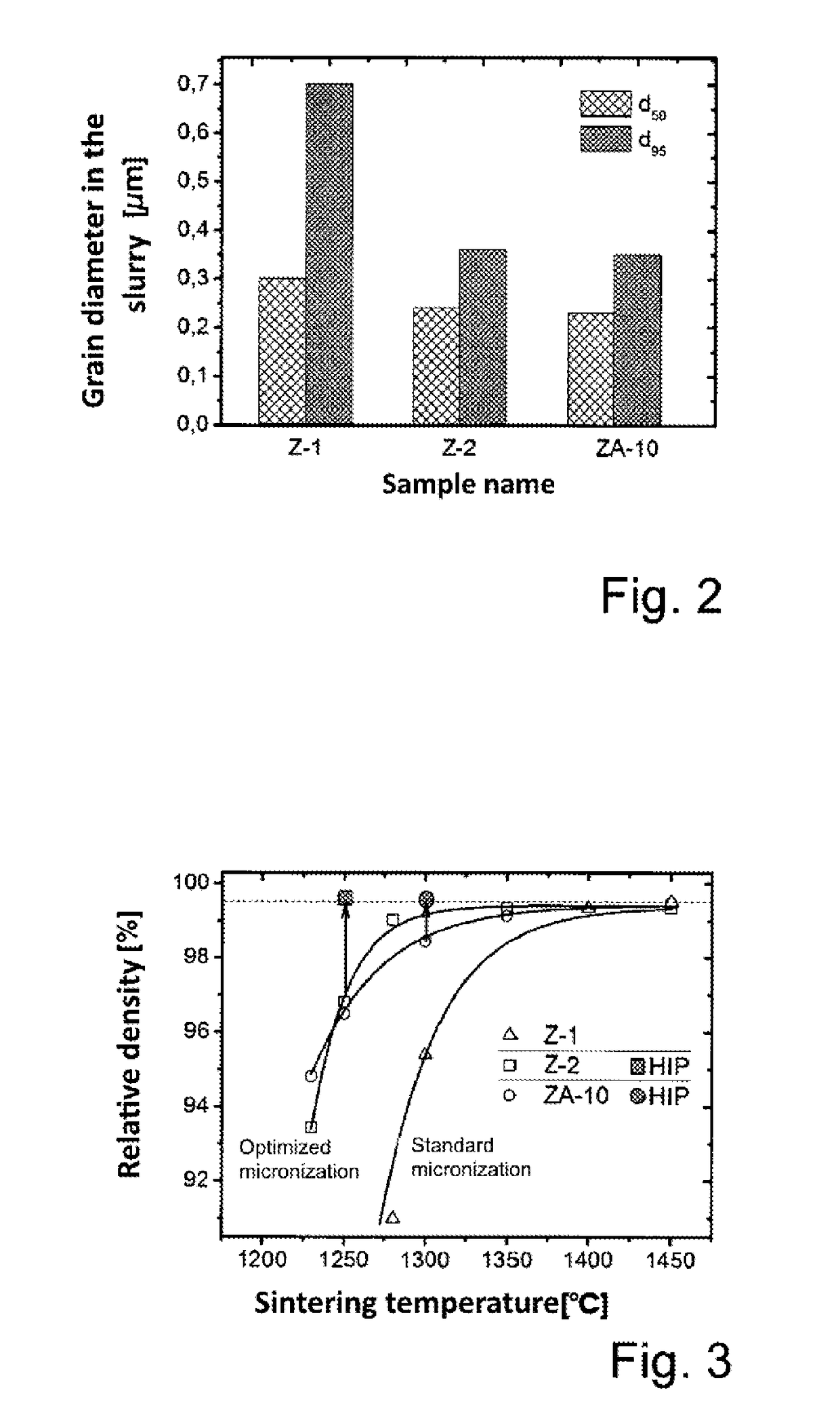Shaped sintered ceramic bodies composed of Y2O3-stabilized zirconium oxide and process for producing a shaped sintered ceramic body composed of Y2O3-stabilized zirconium oxide
a technology of y2o3-stabilized zirconium oxide and sintered shaped ceramics, which is applied in dental prosthetics, tooth crowns, medical science, etc., can solve the problems of causing enormous economic losses, tetragonal phase, and positive material behavior, and achieves more economical and process-efficient effects
- Summary
- Abstract
- Description
- Claims
- Application Information
AI Technical Summary
Benefits of technology
Problems solved by technology
Method used
Image
Examples
Embodiment Construction
[0062]Example 1: In a stirring unit, 270 ml of water are placed and a suitable dispersant is added. Next, 500 g of 3Y-TZP powder with a specific surface area of 6 m2 / g are stirred in. The slurry is put in an agitator ball mill. The mill is filled up to 85% by grinding balls having a diameter of 100 μm. The slurry is ground for two hours at 3500 R.P.M., which corresponds to a circumferential speed of 11 m / s, to a particle size distribution characterized in that the d95 value is 50 value is <0.3 μm.
[0063]The milling time is approximately two hours for this amount of solids. The slurry is cast in plaster molds which are dimensioned so as already to make allowances for shrinkage. The standing time is determined by the size of the component. The green bodies are dried in air at 50° C. and then sintered for two hours at 1250° C. The sintered shaped bodies have approximately 95% of the theoretical density. The shaped bodies are then subjected to hot isostatic pressing at 1250° C. and final...
PUM
| Property | Measurement | Unit |
|---|---|---|
| Temperature | aaaaa | aaaaa |
| Temperature | aaaaa | aaaaa |
| Temperature | aaaaa | aaaaa |
Abstract
Description
Claims
Application Information
 Login to View More
Login to View More - R&D
- Intellectual Property
- Life Sciences
- Materials
- Tech Scout
- Unparalleled Data Quality
- Higher Quality Content
- 60% Fewer Hallucinations
Browse by: Latest US Patents, China's latest patents, Technical Efficacy Thesaurus, Application Domain, Technology Topic, Popular Technical Reports.
© 2025 PatSnap. All rights reserved.Legal|Privacy policy|Modern Slavery Act Transparency Statement|Sitemap|About US| Contact US: help@patsnap.com



